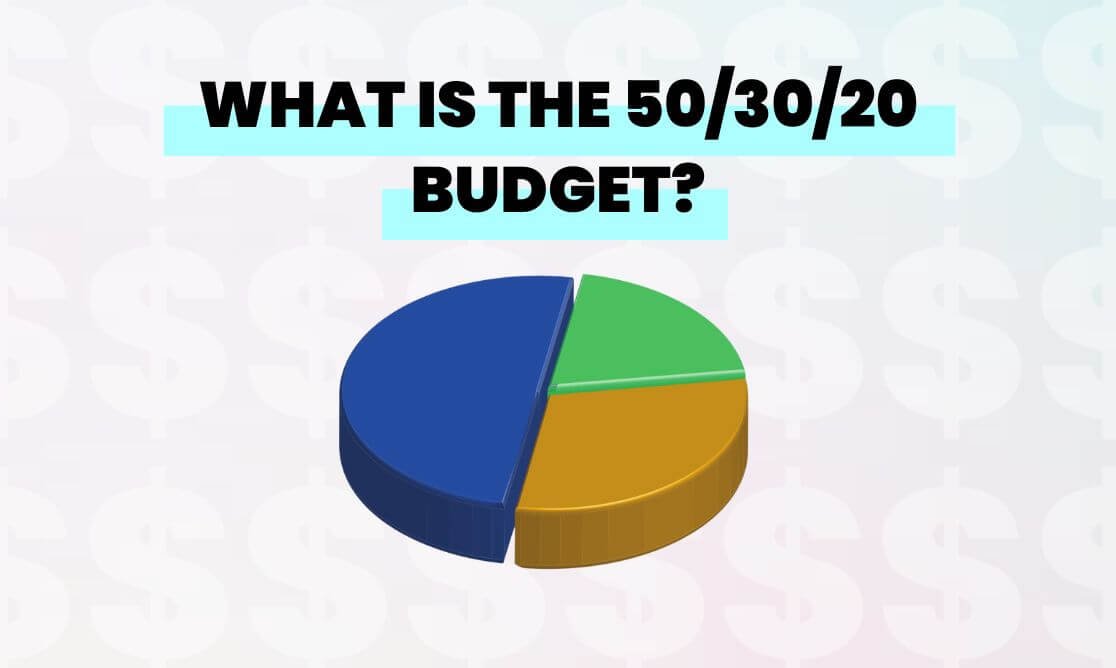If your bank account does not have enough funds to cover essentials before getting your next paycheck, that's a problem. But that's what life is like for too many Americans. The 50/30/20 rule of thumb is an innovative way of managing your finances by allocating your funds to three categories: Wants, Needs, and Goals.
This rule provides a framework to help you manage your money and ensure you get the most out of every paycheck. Let's take a look at the 50/30/20 rule, its history, and practical examples of how to use it for budgeting.

Inside this guide
What is the 50/30/20 budget?
The 50/30/20 rule of thumb provides you with a game plan for allocating your income into three categories: Needs (50%); Wants (30%); and Saving and Investing (20%).
50% for Needs
Your needs are expenses that you can't live without. If you reduce the amount of money allocated to your needs, your quality of life will suffer.
For example, the following are needs:
- Rent or mortgage
- Transportation costs
- Food and other groceries
- Utilities, such as power and water
These categories don't leave much wiggle room in your finances without negatively impacting your life. For example, cutting down on the rent you pay might mean moving into a place that isn't as nice as the apartment you're currently living in. As a result, your quality of life may suffer.
Buying low-quality food may save your budget, but it may negatively impact your health. In short, the expenses in this category are mostly non-negotiable.
30% for Wants
Wants define expenses for items that are nice to have. However, you can get by without them adversely affecting your lifestyle. Some examples of wants include the following.
- Streaming services or cable bills
- Dining out at restaurants
- Vacations
- Hobbies
20% for Saving and Investing
The final 20% of your income goes towards saving and investing to cover emergency expenses as well as retirement. Debt repayments are also included in this category, such as personal loan, mortgage, student loan, car loan, or credit card payments.
Some of the savings and investments included in this portion of your income are:
- Retirement contributions
- Investment portfolios
- College savings plans
History of the 50/30/20 rule
Massachusetts Senator Elizabeth Warren popularized the 50/30/20 rule of thumb in her book "All Your Worth: The Ultimate Lifetime Money Plan" which she wrote in collaboration with her daughter, Amelia Warren Tyagi.
The pair wrote the book as an advisory plan to teach working-class families how to prepare for unexpected financial events and retirement.
Example
Below is a practical example of the 50/30/20 rule in action.
Let's say your monthly take-home pay is $4,000. In addition, your employer contributes $500 to your 401(k), money which you will ultimately receive when you near retirement. This gives you a total monthly income of $4,500. (We'll leave out tax implications in this example to simplify things).
You'll start your monthly assessment by calculating the spending threshold for each of the three categories mentioned earlier.
Using the 50/30/20 rule, you'll allocate ($4,500 x 50%) to your needs for a total of $2,250. Your wants get ($4,500 x 30%), for a total of $1,500, and your goals get an allocation of ($4,500 x 20%), for a total of $900.
However, since you already contributed $500 through your employer to your 401(k), you'll only allocate $400 ($900 - $500) to debt repayment, savings, or investment.
After making your allocations, you have the following totals in your 50/30/20 budget.
- Total monthly income: $4,500
- Needs: $4,500 x 50% $2,250
- Wants: $4,500 x 30% $1,500
- Goals: $4,500 x 20% $900 (Minus the $500 in your 401(k) = $400)
If you stick to this formula, you will have ample funds to cover your essentials, extras such as meals out or entertainment, debt repayments, and retirement savings
Does the 50/30/20 rule work?
If you're not running a budget, check how the above figures translate into your current income. You'll probably find that one or two of the baskets are over-weighted, impacting the other categories. For instance, many people spend more on their wants and less on their financial goals.
By assessing your spending using the 50/30/20 rule, you can take better control of your finances.
Tips for success
- Track your spending habits. Do you know where your money is going? Keep your receipts and write down all of your expenses on a spreadsheet using the categories mentioned earlier.
- Build accountability. Partner with a friend to help you stay on track with your investment and expenditure goals. Alternatively, hire a financial advisor as a third-party to build accountability and ensure you don't overspend.
- Consider using cash instead. It's easy to go overboard with your credit card, especially if you love to shop. Leave your credit card at home so as to limit your spending to the cash you have on hand. This action reduces the chances you'll overspend on your wants.

